The 7-minute frosting combined with a great base cake layer makes for an intriguing new taste. Find the recipe for Lady Baltimore Cake here!
Have you ever heard of Lady Baltimore Cake?
I hadn’t until I came across a recipe and video on Martha Stewart’s website.
Even if you already know how to make Lady Baltimore cake, it is still totally worth checking out the video with Martha and Amy Sedaris making this classic cake. The two are hilarious and Amy is a total hoot! I had just as good of time making and experimenting with the recipe as I had watching the video!
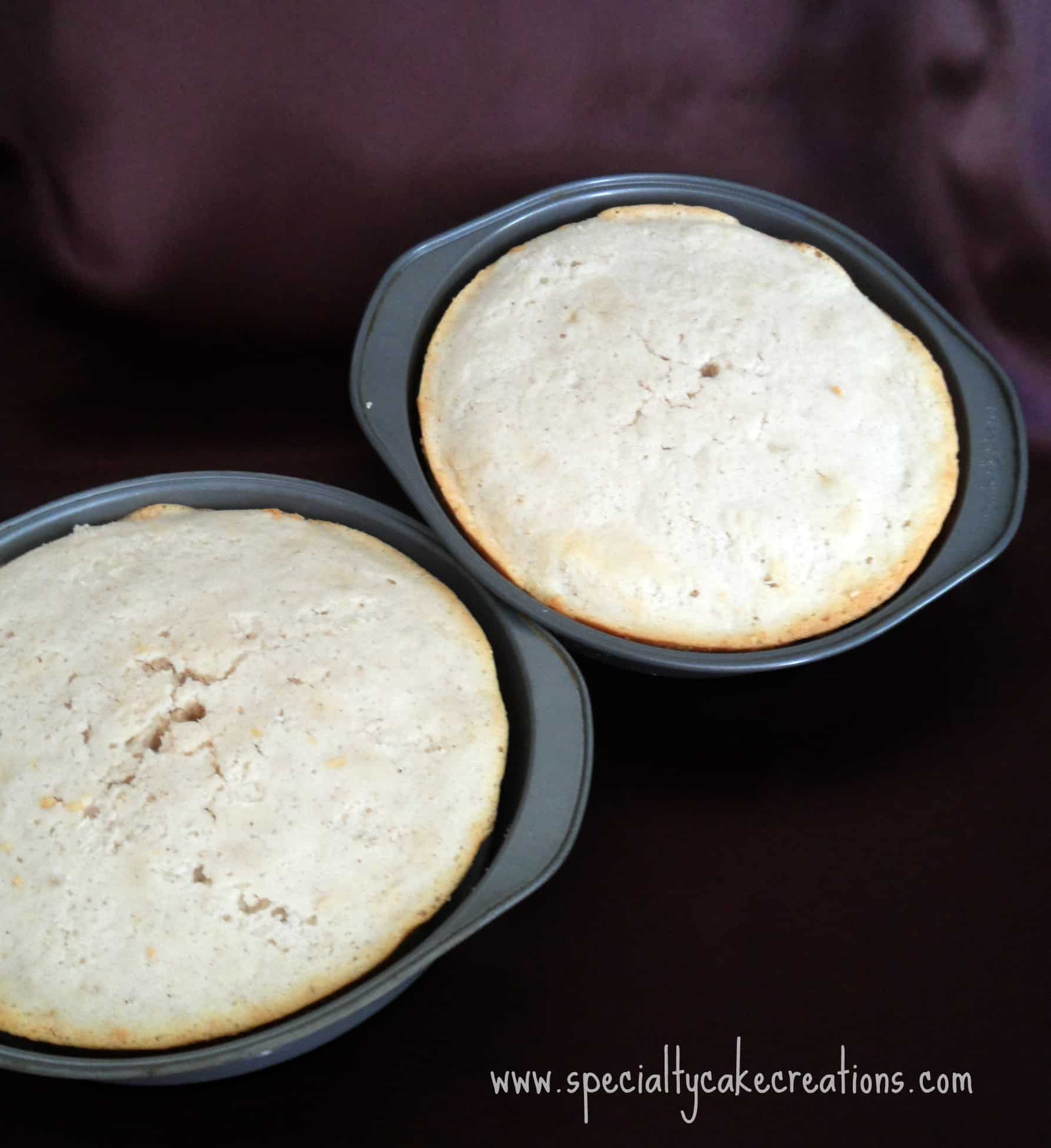
On the other hand, if you’ve never made this iconic cake, or perhaps you don’t know how, now is the perfect time to learn! This is such a classic and delicious cake and there is no doubt your time will be well spent making it and enjoying it!
The Recipe for Lady Baltimore Cake
In the beginning, you’ll start out with two layers of a white cake. It is not yellow cake (meaning, no egg yolks are used in the recipe) and, additionally, there is no butter used in the cake (it only uses a little shortening).
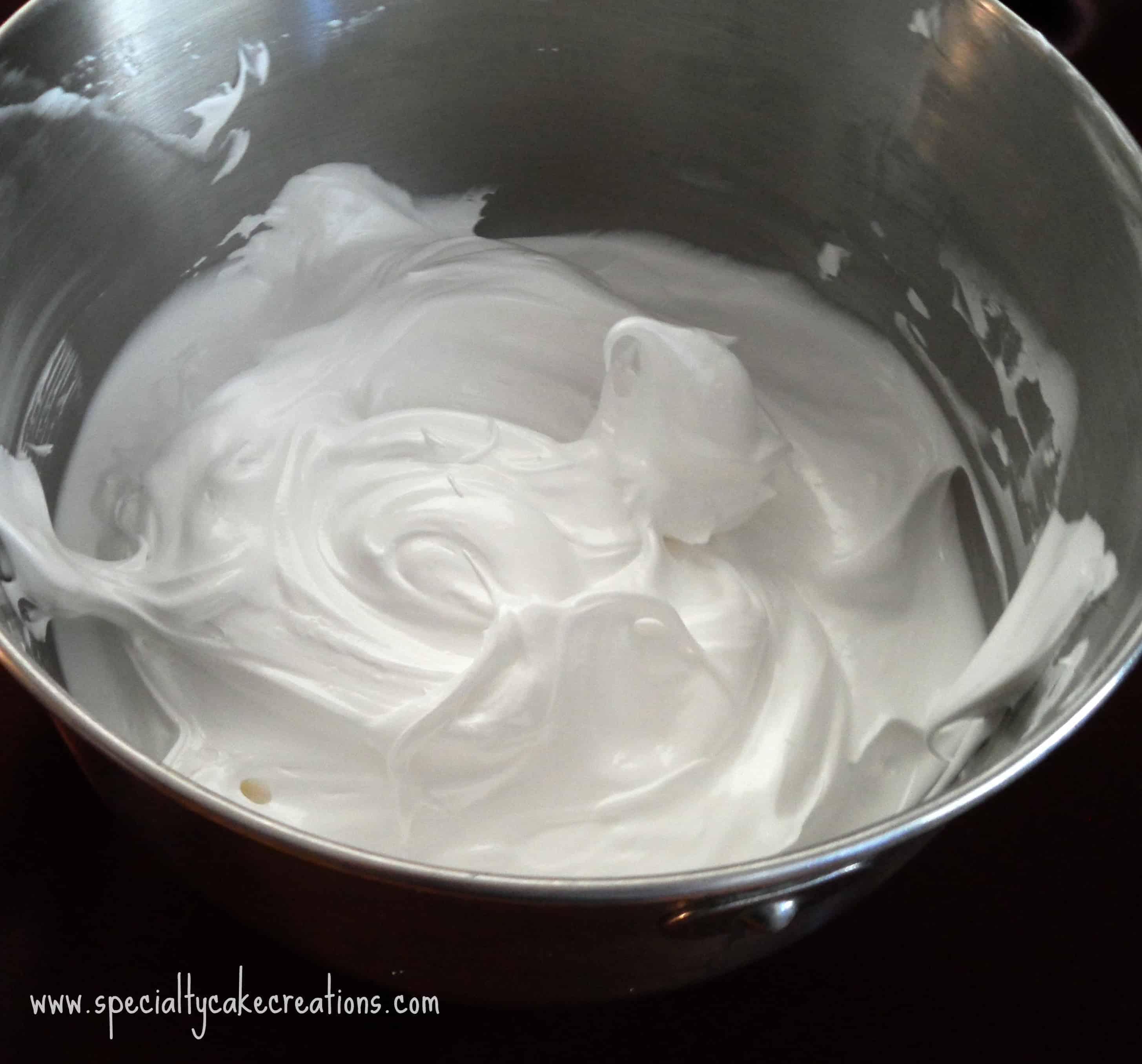
The frosting and filling start out with what you may know as “7-minute frosting.”
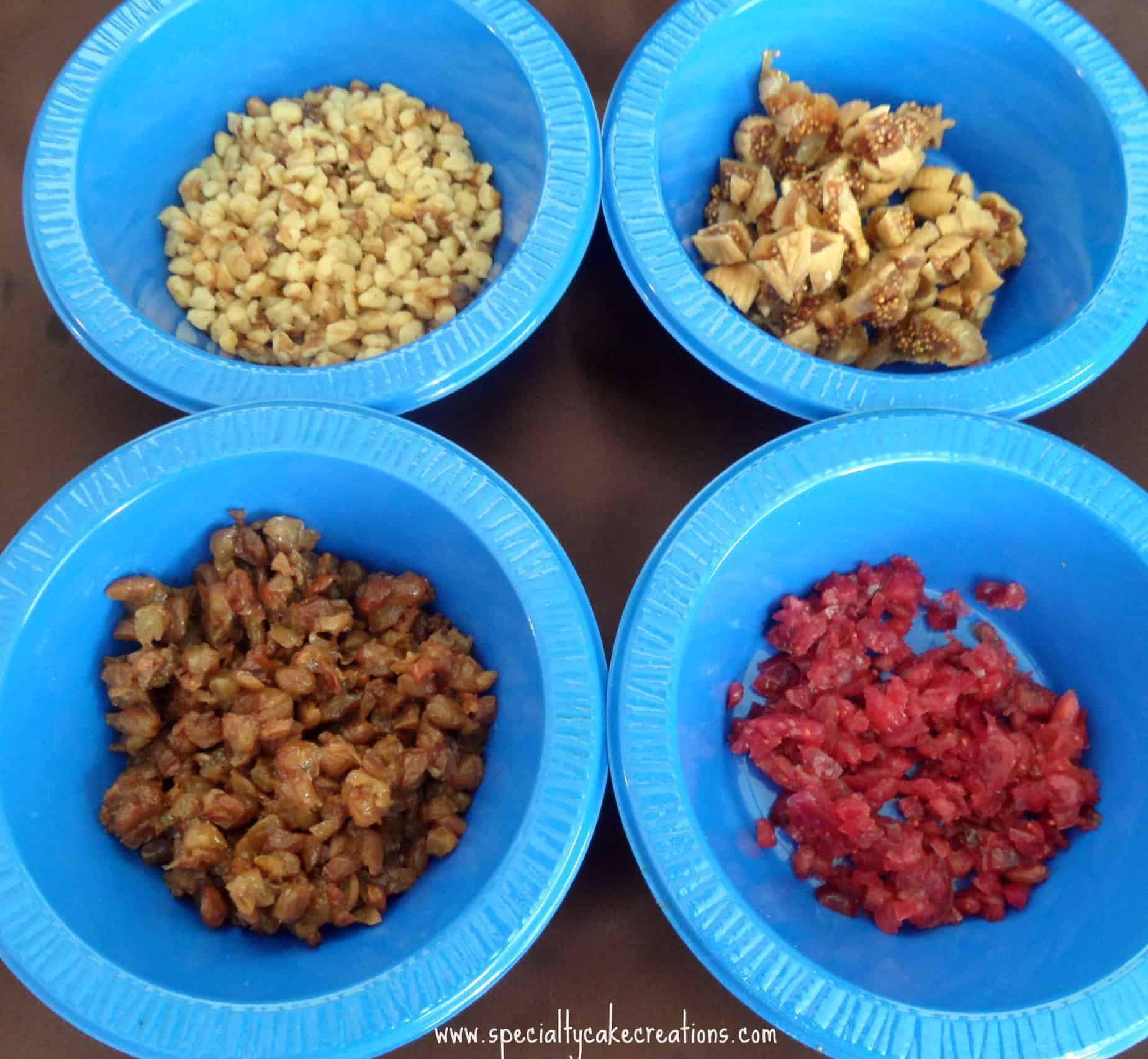
For the filling, Martha suggests putting aside one-third of the frosting, but, in my personal opinion, one-quarter of the frosting would’ve been sufficient.
Additionally, to add to the suggested ingredients of soaked raisins, chopped walnuts, and dried figs, I also chopped up some dried cranberries for some tartness. I personally think this was a really nice addition to the ingredients and cake overall. You may also want to experiment with different ingredients perhaps and make a creation of your own! If you’re unable to find dried or fresh figs, note that you can also use fresh or dried dates since both figs and dates tend to have similar tastes, especially when dried.
When you mix all the goodies with part of the frosting will look something like this (Apologies for the blurry picture):

Then, after leveling the cake layers, filling them, stacking and frosting them with the remaining icing it will look something like this:
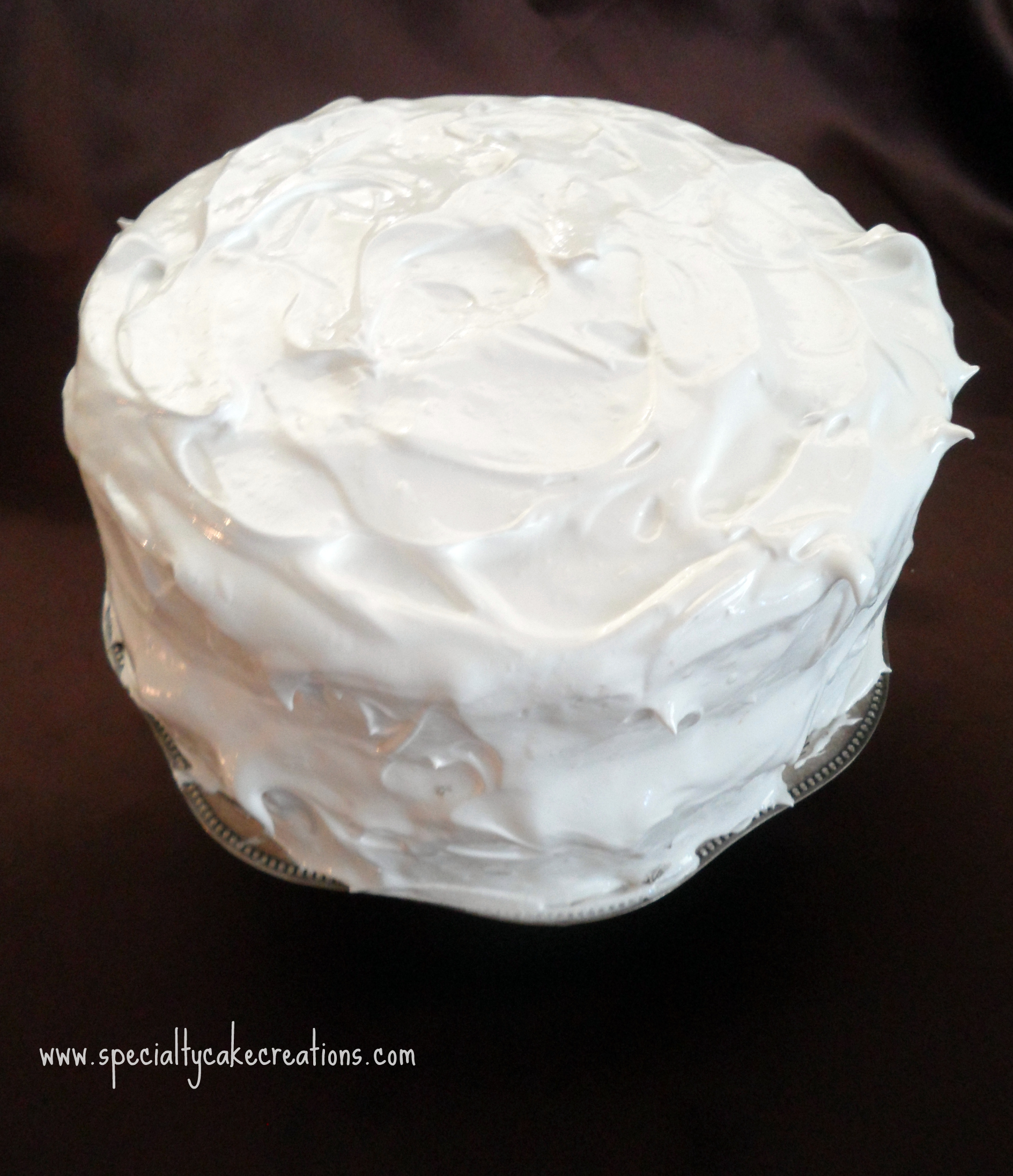
The frosting doesn’t have to be done too neatly, as it still looks really nice to just make a pattern with a spatula or spoon. You can easily make any pattern or design you want by using a spoon or spatula as I did!
My finished Lady Baltimore cake did not have the most aesthetic appeal as I was in a big hurry to get to my dad’s birthday party. But the taste was great and very different from your standard flavors. Perhaps if you have a bit more time to spend on making the cake and if aesthetics are important to you, then yours may turn out looking a bit different.
I did not regret venturing out of my “cake comfort-zone” to try this cake with an elegant name. If you, too, are looking to venture out of your own personal baking comfort zone, this is a great place for you to start!
Adapted from Martha Stewart’s recipe
Recipe
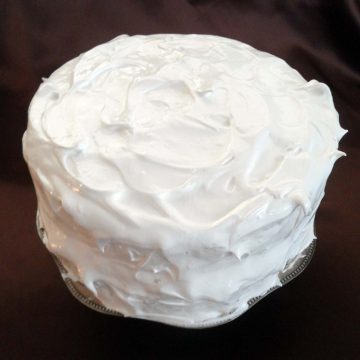
Lady Baltimore Cake Recipe
Ingredients
For the white cake layers:
- 3 cups cake flour not self-rising
- 4 teaspoons baking powder
- Pinch salt
- 1 ⅓ cups milk
- 2 tablespoons pure vanilla extract
- ¾ cup shortening
- 1 cup plus 3 tablespoons sugar
- 6 large egg whites
For the Frosting
- ½ cup raisins chopped
- ¼ cup rum kirsch, or warm tea
- 2 cups sugar
- 4 large egg whites
- Pinch salt
- 2 teaspoons pure vanilla extract
- ½ cup chopped walnuts
- ½ cup chopped dried figs
- ¼ cup chopped dried cranberries
Instructions
White Cake
- Preheat oven to 375F. Grease two 8" round cake pans with cooking spray and line bottoms with parchment paper.
- In a medium bowl sift together flour, baking powder and salt. In a small bowl stir together milk and vanilla.
- In your mixing bowl cream together shortening and 1 cup sugar with electric mixer. On low speed, add flour mixture in 3 parts, alternating with milk mixture; beginning and ending with flour. Beat until just combined.
- Using your mixer with the whisk attachment, beat egg whites on low speed until foamy. While still mixing, slowly add 3 tablespoons sugar; beat on high until stiff peaks form. Do not overbeat. Fold a third of the egg-white mixture into the flour mixture until combined. Gently fold in remaining egg whites.
- Divide batter evenly between prepared pans, smooth with an offset spatula. Bake cakes until golden brown and a cake tester inserted into centers comes out clean, about 25 minutes.
- Cool cake layers for 10 minutes in pans, then invert onto wire rack; peel off parchment. Re-invert cakes and let them cool completely.
Frosting & Filling
- Put raisins and liquor/tea in a small bowl. In a small saucepan, bring sugar and a little more than ½ cup water to a boil. Continue boiling until syrup to soft-ball stage (234 degrees to 238F on a candy thermometer).
- Place egg whites in mixing bowl and mix with whisk attachment on low speed until foamy. Add salt and beat on medium-high speed until stiff but not dry. Do not overbeat.
- With mixer running, add syrup to whites, beating on high speed until not steaming anymore, about 3 minutes. Add vanilla and mix until incorporated.
- For the filling, transfer ¼ of the frosting to a medium bowl. Drain raisins and stir into the frosting along with walnuts, figs and cranberries.
- Using a serrated knife, level the cake layers. Place strips of parchment paper around serving plate or cake stand. Place one layer on the plate. Spread filling over top of the cake layer. Top with other cake layer. Spread entire cake with frosting; remove parchment paper strips.
Pin this Lady Baltimore Cake Recipe for later?
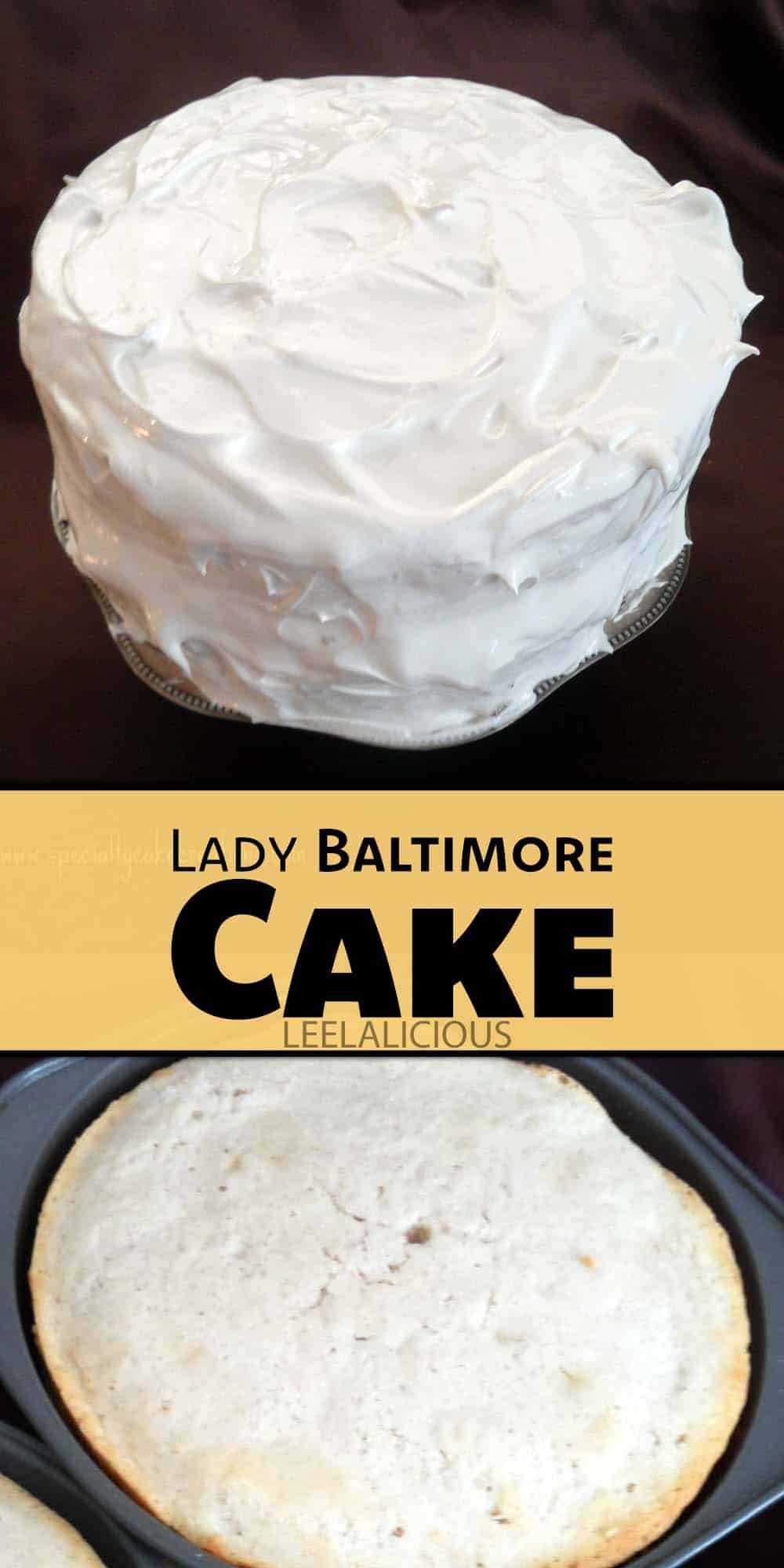
Common Questions
The cake is believed to have originated in the Southern United States and was named after the 1906 novel "Lady Baltimore" by Owen Wister. The novel features a cake that is similar to this recipe.
Lady Baltimore cake gained popularity in the early 20th century, particularly in the Southern regions of the United States. Its rise to fame was fueled by its inclusion in literature and its association with the upper class.
Lane cake is a traditional Southern dessert that typically consists of a rich sponge cake layered with a mixture of fruits, nuts, and spirits such as bourbon or brandy. It is also commonly frosted with a rich, egg-based icing.
Lady Baltimore is a fictional character from the 1906 novel of the same name by Owen Wister. The character is associated with a specific type of cake that has become popularized as the Lady Baltimore cake.


Konrad Braun
When will you be making this again? It was so yummy!